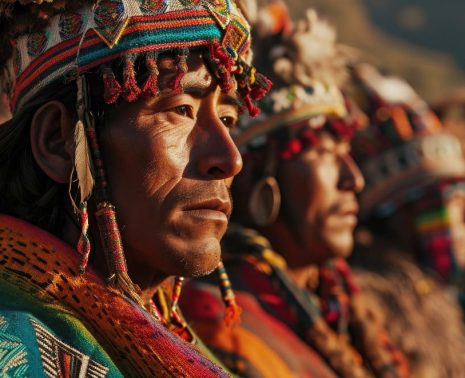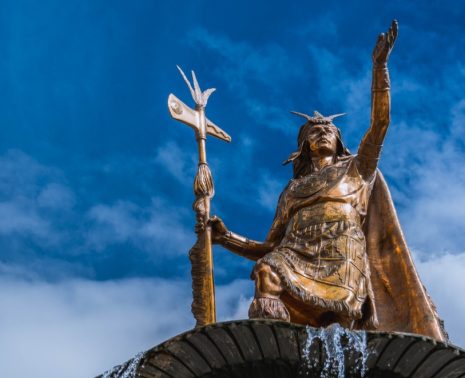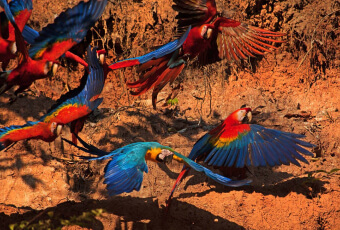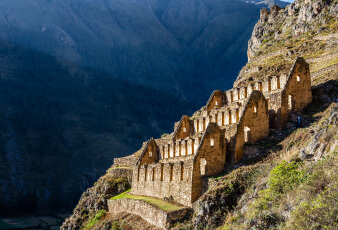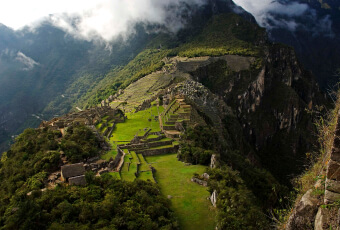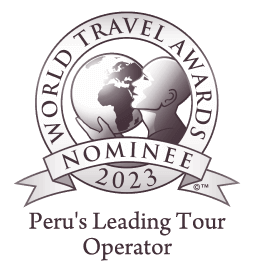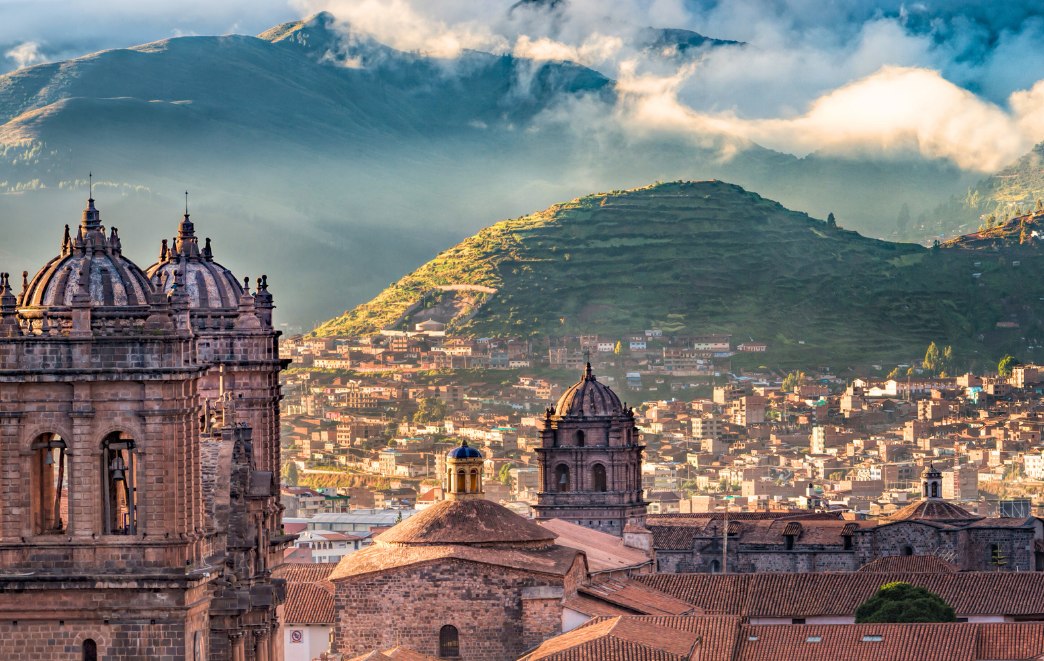
These seven UNESCO World Heritage Sites are absolute must-see destinations for travelers looking to step back in time with a historical tour to Peru. Some showcase the tremendous power of ancient South American empires, while others tell a story of Peru’s history as it was introduced to the modern western world. Step into a living history lesson when you include a stop at any of these sites during your trip to Peru!
Visit Machu Picchu For Bucket List Worthy Excursion
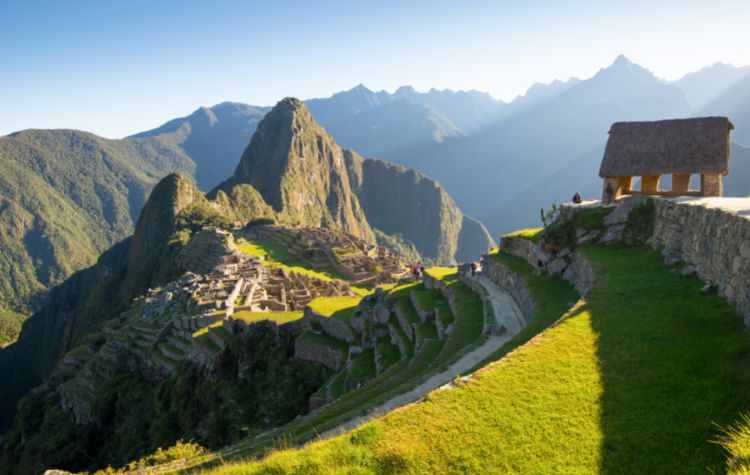
Perched on a mountain top several thousand meters above sea level is Machu Picchu, the extraordinary ancient citadel constructed centuries ago by the Incan people. Throughout the entirety of South America, there are few historical sites as iconic as this one. Travelers come from around the globe to trek the mountain and explore this multi-purpose city that once offered sanctuary for leaders of the Inca empire.
This fascinating citadel was one of the first Peruvian UNESCO World Heritage Sites, recognized for its artistic and architectural importance, as well as the historic legacy attached. While this site was built and used by the Inca civilization, it was abandoned in the 16th century and remained unknown to the outside world until 1911. Visiting Machu Picchu is an essential part of any historical tour to Peru, whether you want to take a peaceful train ride to the city or hike the Inca trail.
Atop this “old mountain” (Machu Picchu’s literal translation from the indigenous Quechua language!), there are several can’t-miss sites that an expert guide will teach you about during your tour. Visit the Sun Gate for a breathtaking view of the entire citadel. Get a look at the lesser-known Inca Bridge, used by the empire as both a tool for communication and defense against enemies. Trek to Huayna Picchu, Machu Picchu’s neighboring mountain that looks over the entire city and beyond into the Sacred Valley.
Wander the Prehistoric Chankillo Archaeoastronomical Complex
Peur’s 13th and most recently recognized UNESCO Heritage Site is the Chankillo Archaeoastronomical Complex which showcases how early human civilization was developed. Hidden in the mountainous desert region of the Casma Valley, this site has stood since 250 BC. It is a truly awe-inspiring site, as you learn what our human ancestors were capable of all those centuries ago.
The large hilltop complex may appear simple at first glance, but visitors will quickly realize they are seeing one of the early calendars used to track time and dates. While many civilizations developed their own methods of keeping dates, this calendar is unique in its ability to tell the entire solar cycle, rather than focusing on one single astronomical point.
Whoever used the towers at Chankillo to track time would have had an exact date like we do, give or take a one or two days difference. Anyone visiting Peru who appreciates the evolution of humanity, science, and technology should seize the opportunity to explore this one-of-a-kind destination!
Discover The First American City: The Sacred City of Caral
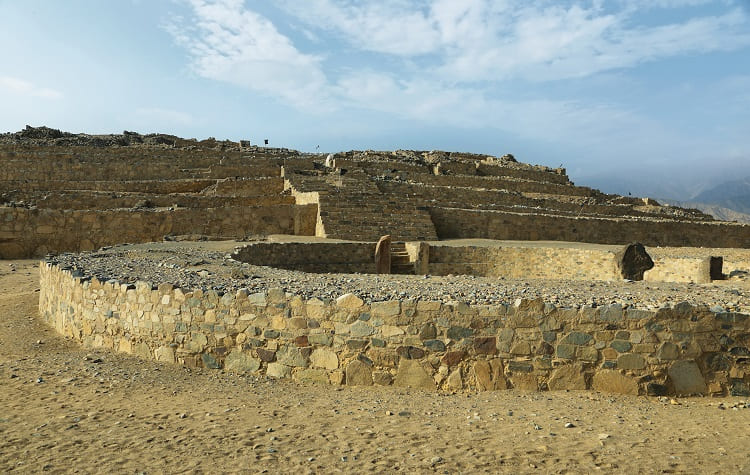
Deep in the Central Andes lies the city of Caral, one of the oldest city centers in the Americas. This city is over 5,000 years old, dating back to the Late Archaic Period when human civilizations really started to develop across the Western hemisphere. Many archeologists and historians credit Caral-Supe as the first official city in the New World! Including this stop on your historical tour to Peru would be a phenomenal way to step back in time and explore the earliest traces of organized social systems.
Pyramidal structures and circular courts carved into stone make up a complex city, thoughtfully constructed with political and religious purposes. Record keeping devices known as quipu have been unearthed here, and although no living person knows how to read the hidden messages of this long-forgotten system, it signifies that important work was being done in Caral. This city is an exemplary destination for any traveler who wants to dive into the past head first and see where the social world of the Americas took off.
Walk the Ancient Andean Road System: Qhapaq Ñan
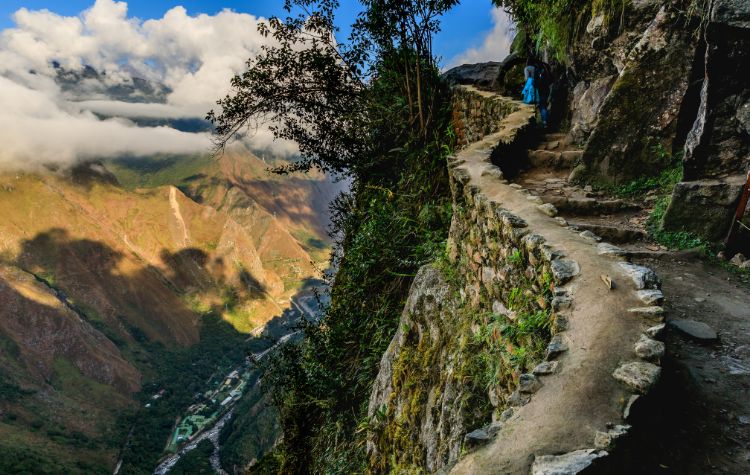
A successful empire can only survive with solid communication, something the Incan people were able to master in the two centuries they ruled South America. Today, travelers can follow the Qhapaq Ñan which means “main road” in Quechua. Learn about America’s largest road network from the 15th century and how the Incan empire used it to maintain their rule in South America.
Also called the Inca Trail, this road once cut across 60,000 kilometers of the Americas (that’s 37,282 miles!), stretching across Ecuador, Peru, Argentina, Chile, and Bolivia. Qhapaq Ñan was used to maintain social and political control of the vast land. Every state operation took place on this road, whether it involved trade or communication, army transport, or ideological development.
While the Inca empire no longer rules over Peru, visitors can hike this trail and discover the history that has seeped into the ground beneath their feet. If you want to take your time, the classic 4-day trek is one of the most rewarding excursions nature and history lovers can take. But if you’d prefer a less strenuous experience, one-day hiking options to Machu Picchu are a great way to see the Inca trail without dedicating too much time here.
Chan Chan Archaeological Zone
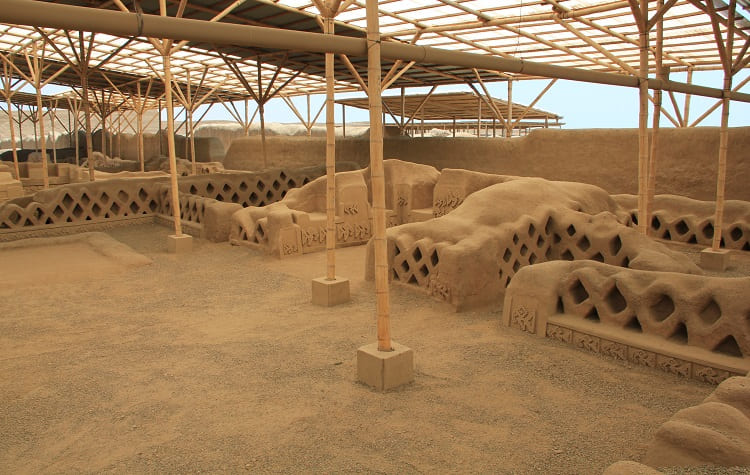
Before the rule of the Incas expanded across all of Peru, there was a smaller civilization known as the Chimu civilization or the kingdom of Chimor. Chan Chan was the capital city for this kingdom, the largest city from pre-Columbian times that still stands today. Historians have studied the intricate design of this fortress and concluded that the Chimu people upheld a strict social-political strategy, reflected even in the architecture.
This UNESCO Heritage Site is one of Peru’s lesser-known destinations, one that offers a unique perspective of history. Walking through the Tschudi citadel of Chan Chan shows how complex and advanced this society was. Imagining the silver and gold that once decorated the simple mud structures makes the experience even more magical. While this city was stripped of its riches over time, it still stands as a memorial to the Chimu kingdom. Explore the citadel on your vacation to Peru when visiting Trujillo or greater northern Peru. This is a fantastic site to discover something completely new from the rich history of South America.
Explore the City of Cusco During Your Historical Tour to Peru
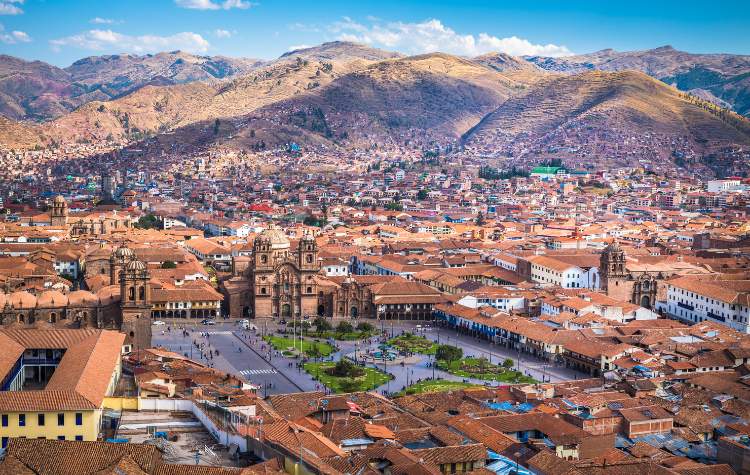
Developed under Inca rule, the city of Cusco stands as a beautiful collage where ancient history and modern culture merge into one stunning portrait. This complex metropolis used to provide great support to the Inca Empire in the 15th century. Today, it stands as a proud symbol of Peruvian history and success.
Nestled in the heart of the Andes, the city of Cusco is a spectacular destination to explore during your historical tour of Peru. It has been well-preserved despite the transitions of power throughout the last several centuries, so you can still see original monuments and temples overlapping with more modern structures. Out of all the UNESCO Heritage Sites, you can explore in Peru, this city is one of the most lively. Here, you can study important landmarks like Plaza del Armas, Cusco’s historic city center that stands as a symbol of the intricate history of Peru.
Tour the Cathedral and Basilica to learn how religion influenced the city’s development. Or, taste what life is like for the locals when you go shopping at the iconic San Pedro Market! Adventurous eaters curious about local cuisine will love spending a day with the vendors learning about Peruvian gastronomy.
Step Into an Ancient Paradise at Río Abiseo National Park
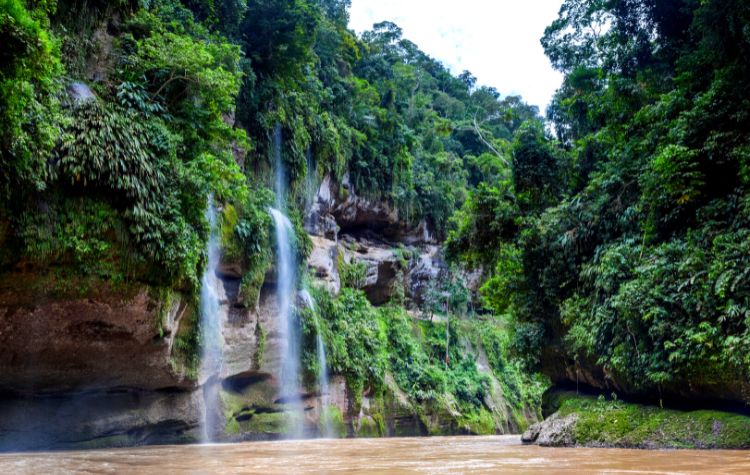
One of the most unique historic destinations you can explore is the Rio Abiseo National Park in the tropical Northern Andes of Peru. At first glance, this may appear to be just a natural reserve with overwhelming amounts of unique flora and fauna. But, take a closer look! As you hike through the park and trek across Andean grasslands, you will discover archaeological sites that have stood for at least eight millennia.
The remaining traces of human life were discovered here to show us what life looked like during the ceramic period as early as 6,000 BC. The occupation of Río Abiseo lasted for thousands of years until South America was modernized and the sites were abandoned. However, visiting this park allows travelers to explore a lush part of Peru submerged in a remarkable, timeless oasis, while also learning about the earliest American settlers.
Imagining what daily routines looked like from these green mountain tops is unbelievable, a true one-of-a-kind chance to disconnect from our everyday routine and reflect on the history of our human ancestors.
Peru offers a wondrous escape into the past for travelers who are passionate about history and cultural evolution. Seeing the stories from the history books come to life is an amazing opportunity! If you’re ready to plan your historical tour to Peru, talk to a Kuoda travel expert and we will help organize the best adventure.
How To Experience Peruvian Artwork and Craftsmanship on Your Next Tour To Peru
Peru’s rich heritage is brought to life through its vibrant handicrafts. From colorful textiles to intricate...
Read PostKuoda’s Guide to the 2024 Inti Raymi Festival
The 2024 Inti Raymi festival will stand as a tribute to the grandeur of the Inca Empire, steeped in centuries ...
Read PostFascinating Facts You Should Know About the Incas
Curious to know some facts about the Incas? Explore Inca Heritage with Kuoda Travel. Well, for starters, depen...
Read Post

 Call
Call 








